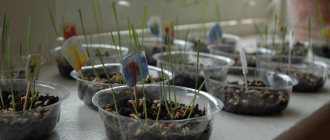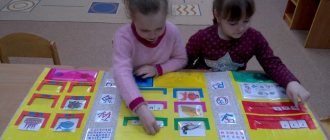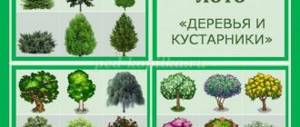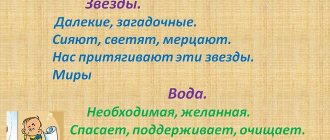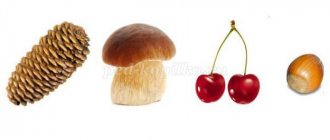Literary quiz with answers based on Bianchi's stories for primary schoolchildren
Literary quiz based on the stories of V. Bianki for primary school
Author: Yulia Vladimirovna Malysheva, teacher of the after-school group, Gymnasium No. 3, Sharya, Kostroma region Description: This material can be used by primary school teachers for extra-curricular activities, literary reading lessons for younger students classes. Preparatory work: Read the stories of V. Bianki “How Ant Hurried Home”, “Sundew - Mosquito Death” Goal: to contribute to the formation of general cultural competence through the perception of fiction. Objectives: to expand ideas about the world around us, to develop the ability to analyze information, to formulate one’s own point of view, to develop skills in working with scientific and literary texts, to develop the ability to answer questions about the content of the text, to instill an interest in reading, to study nature, to cultivate a caring attitude towards living nature.
Progress of the event
Vitaly Valentinovich Bianki was born in 1894 (1954) in the family of a famous scientist, an employee of the zoological museum. He studied at the Faculty of Physics and Mathematics of St. Petersburg University, specializing in biology. For some time he worked as a teacher at school. Over 35 years of literary activity, Bianchi published 120 books. His creative heritage includes more than 300 stories and fairy tales, novellas and essays. The writer's books introduce children to the world of wildlife. V. Bianchi’s first fairy tale, “The Journey of the Red-Headed Sparrow,” was published in the first issue of the children’s magazine “Sparrow.” Then his books were published: “Who Sings What?”, “The First Hunt”, “Cuckoo Little”, “Whose Nose is Better?”. (Book Exhibition) His “Forest Newspaper” became a unique phenomenon in children's literature. In “Forest Newspaper” V. Bianki introduces readers to the nature of the middle zone. As a boy, V. Bianchi spent all his free time in the forest, greedily listening to the stories of old hunters. He tried to understand what the birds were “talking” about, why the legs of a heron and the paws of a mole were so different, why some animals built houses in trees, others on water or under water. All forest fairy tales, stories and stories of Bianchi are based on his own scientific observations of the life of the forest and its inhabitants. By creating them, he tried to teach the children to make independent observations of their native nature. Bianchi's heroes are not only animals, birds and insects: but also their friends - people.
Quiz “How Ant hurried home”
1.Who is the main character of the work? (Ant) 2. What did the ant hurt itself? (Legs) 3. What is the name of the ants’ home? (Anthill)
4. Why was the ant far from home? (An ant was sitting on a leaf, the wind blew and tore the leaf from the branch)
5. Why did the ant need to return home before sunset? (After sunset, the ants close all the passages and exits in the anthill).
6. Why couldn’t the ant get home on its own? (The ant knocked off his legs) 7. How many types of transport has the ant changed? (8) 8. Who did the ant meet first? (Caterpillar surveyor)
9. Why is the caterpillar called a surveyor? (The caterpillar moves as if measuring the ground) 10. Who did the ant meet next? (Spider – Haymaker)
11. Why did the ant almost bite the spider? (The ant got tired of the slow ride) 12. Who did the ant ride next? (Ground beetle)
13. With whom does the author compare the ground beetle? (The author compares the ground beetle to a horse)
14. Why does the author compare the ground beetle with a horse? (Because the ground beetle has straight legs) 15. Why did the ground beetle refuse to carry the ant further? (Her legs are too short) 16. Who carried the ant across the potato field? (bug - flea)
17. To what obstacle did the Bug-Flea Ant take him? (Before the fence) 18. What do I remind you of the legs of the Bug - Flea? (Springs) 19. Who carried the ant over the fence? ( grasshopper)
20. Why didn’t the grasshopper carry the ant further? (The river is wide, a grasshopper cannot jump over it) 21. Who transported the ant across the river? (water strider)
22. Who carried the ant through the forest? (May Khrushch)
23. Who was the last to help the ant get home? (Caterpillar Leafroller)
“Sundew - mosquito death”
1. Who is the main character in the work? Mosquito Sundew - mosquito death elk 2. Who did the mosquito meet on a pine tree in the forest? Starling Kopalukha Owl 3. Where did the mosquito bite the mushroom picker? In the nose In the eye In the lip 4. Who did the mosquito meet in the forest thicket? Bear Squirrel Sokhatiy
5. Who told the mosquito about Rosyanka? Dragonfly Beetle Ant 6. Where did Sundew live - mosquito death? On the lake In the grass In the swamp 7. What flowers does Sundew have? White with green bells White with blue bells Blue with red bells
8. What did Sundew use to press the mosquito to the leaf? Flexible pins Sharp needles Volski 9. What was on the pins of the leaves? Water Honeydew Nectar 10. Why couldn’t the mosquito fly away from Sundew? Stuck to a leaf Got caught in a web Wanted another drink
We recommend watching:
Game scenario - quizzes on fairy tales in elementary school Intellectual quiz with answers for students in grades 3-4 on the topic: Rivers Quiz for children in camp with answers Literary game for grade 2 with presentation. Uspensky "Uncle Fyodor, dog and cat"
Similar articles:
Ecological quiz with answers for grades 3-4
Traffic rules quiz with answers for 1st grade
Quiz with answers for 1st grade
Educational quizzes for primary schoolchildren with answers
Intellectually - a creative quiz for children of primary school age
Quiz based on stories by V.V. Bianchi (with answers)
Quiz based on the works of Vitaly Valentinovich Bianchi.
1.
Recognize the book by its description:
1. The brave, determined little mouse was not afraid of the turn of fate when the children sent him sailing on a boat. After the shipwreck, he was not afraid of the terrible predator. Winters under the snow. And the children who offended the mouse now remember him every day and want to help. (“Mouse Peak”).
2. The poor ant climbed onto a birch tree and went on an air journey. But he needs to get home before sunset at all costs. (“How Ant hurried home”).
3. The author placed an egg from a destroyed wheatear nest into the nest of a mocking warbler in the hope that the warbler would hatch and feed someone else's chick. ("Foundling").
4. It turns out that voiceless animals can sing too. But they sing, some with their wings, some with their paws, and some with their tail. (“Who sings with what?”).
5. The little flycatcher bird talks to different birds and chooses the best nose. (“Whose nose is better”).
6. One hunter was very fond of music and often played the violin. And when I went to hunt a bear, I saw that the bear also knew how to play, even on a sliver of wood. The hunter could not shoot at such a musician. ("Musician").
2.
Smart questions:
1. Are there any birds that have a tail just for beauty? (No, “Tails”).
2. Which bird took a hatchet to make a nest? (Nobody, birds make all their nests with their beaks).
3. Why in the story “Tails” did the animals not want to give their tails to the fly? (We need it ourselves).
4. What did the Locust sing in the story “Who sings with what?”? (“She has violins on her wings, and instead of bows there are long hind legs with their knees back. There are notches on the wings, and there are hooks on the legs. The Locust rubs itself with its legs on the sides, the notches touch the hooks - it chirps.”).
5. Who sang with their tail? (Snipe).
6. I found out the flycatchers, whose nose is better? Why? (No. A hawk carried it away.)
7. How did the adopted chick thank his new mother in the story “The Foundling”? (“With the warmth of his body he warmed her testicles - he hatched her chicks”).
8. Which of your helpers was bitten by the ant? (Leafworm caterpillar).
9. Why does the bird Lyulya, according to Bianchi, live on the water? (When animals and birds divided the earth, she did not get it, since she could not catch her breath, recover from diving to the bottom).
10.What saved Peak the Mouse from the shaking falcon? Why did the falcon, rushing at the mouse, suddenly freeze above the ground? (Invisible fur. The falcon saw the white chest of the mouse when it was sitting, and the fur on its back was yellow-brown. The color of the earth, and when the mouse lay down, the falcon did not see it). What is the deer's tail for? (She waves her white tail like a handkerchief to the fawns, and they run after her from the wolf).
11. How did the Man get rid of the annoying Fly? (I sent her to the Cow to ask why she needed a tail. “Tails”).
12. Why did 5 out of 6 wheatear chicks die in the story “The Foundling”? (the boys destroyed the nest).
13.Who, at the request of animals and birds, was able to get a pinch of earth from the bottom of the sea? (Bird Lula).
3.
Whose tail?
1. “He bent in an arc, put his hind legs to his front legs, his tail to his head. Then he suddenly stood up to his full height and lay down on the ground with a stick. He measured on the ground how tall he was, and again hunched himself into an arch. So he went, and so he went to measure the land" (Caterpillar-surveyor, "Like an Ant...").
2. “His tail was long, flexible and prehensile. With such a catch, he could climb thin branches no worse than a monkey” (Mouse Peak).
3. “I don’t even have a tail: it’s my belly. I squeeze it and unclench it, and that’s all I can do to crawl. I am a gastropod." (Slug).
4. Whose tail is the rudder? “If I need to turn right, I turn my tail to the right; if you go to the left, I put my tail to the left.” (Fish).
5. He has a tail “instead of a paddle.” “My legs are weak, thin, I can’t row with them. And my tail is wide and strong. As soon as I slap my tail on the water, it will throw me up. Slap, splash - and I float where I need to.” (Cancer).
6. “The tail serves as a support for him.” He sits on his tail when he hollows out a tree, resting his strong, hard tail against the bark. (Woodpecker).
4.
Which book are the lines from?
1. “Hey, you small fry!.. We caught a midge - and we’re glad! But there is no way to put something aside for yourself. I’ll catch a fish and put it in my bag, I’ll catch it again and put it away again.” (“Whose nose is better”).
2. “Mice are prowling in the meadow, looking for bumblebee nests. Bumblebees walk in other people's meadows, but don't even look at the old people's meadows. Clover will not be born in the meadow. The cow has little milk. So the Old Man has nothing to whiten his tea with.” ("Owl").
3. “Before there was no land at all,” says the hunt trapper. - There was only one sea. Animals and birds lived on the water and children were raised on the water. And it was very inconvenient” (“Lyulya”).
4. “The old man crept up from behind the Christmas tree and saw: at the edge of the forest, a tree broken by a thunderstorm. There are long splinters sticking out of it. And a bear sits under the tree, grabbing one sliver of wood with its paw.” ("Musician").
5. “He raised his long beak, knocked, rattled one half of it against the other - now quieter, now louder, now less often, now more often: the rattle is a wooden rattle, and that’s all!” (Stork, “Who sings with what?”).
6. “The ants are strict: only when the sun sets, everyone runs home. When the sun sets, the ants will close all the passages and exits and go to sleep. And whoever is late can at least spend the night on the street.” (“How Ant hurried home”).
